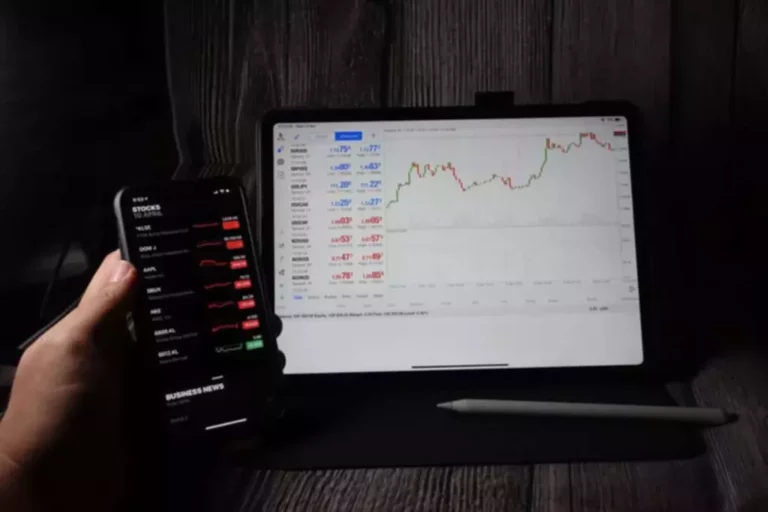And that number will likely continue to grow, as more firms have invested in new technology. A survey by AIMA, in conjunction with Simmons & Simmons and Seward & Kissel, found that 34 percent of hedge fund managers surveyed said their firms are newly investing in alternative data. The trend toward lower-cost services could also lead to a shift in the relationships between advisors and their clients. “That’s one of the things that can shape the marketplace because it shifts the balance of power toward the consumer,” Egan explains.
You can adjust your preferences at any time through the preference link in any electronic communication that you receive from us. Deloitte refers to one or more of Deloitte Touche Tohmatsu Limited, a UK private company limited by guarantee (“DTTL”), its network of member firms, and their related entities. DTTL and each of its member firms are legally separate and independent entities. “If you had the raw data, you were able to see past that, not make that error and trade against that,” Ekster said. Technical analysis is a tool that helps investors understand when to begin or leave a trade and what price information is. Technical indicators supplement all other types of technical analysis by providing extremely short-term information about how a firm or index may behave.
Recommendations or Sales of Different Financial Products
Businesses, including those in the small and medium sectors, will also find expanding uses for analytics in areas like capital budgeting processes and resource allocation. Data can start observing trends while machine learning spots early patterns humans could easily miss. The prediction that something’s going to rise or fall can lead to safe, smart decision making in the future.
Artificial intelligence (AI) is one of the most transformative technologies of our time. With its ability to learn and evolve, AI has the potential to revolutionize how we live, work and interact with the world around us. Financial analysts often work with key organizational leaders, such as chief financial officers (CFOs).
Financial services companies often struggle with data management having fragmented chunks of data stored at different locations such as reporting software, regional data hubs, CRMs, and so on. Getting this data ready for data science projects is both time consuming and an expensive task for companies. Further, machine learning algorithms are equipped to learn from data, processes, and techniques used to find different insights. Machine Learning works by extracting meaningful insights from raw sets of data and provides accurate results. This information is then used to solve complex and data-rich problems that are critical to the banking & finance sector. TRG Screen also offers its suite of data usage and cost optimization products via managed services, whether the client wants to hand over invoice processing or the entire gamut of market data and information subscriptions administration.
How AI is Changing the Financial Services Industry
But as the volume of data generated by all this activity continues to increase, legacy data systems are struggling to keep up, and a new paradigm of modern data platforms and architectures is emerging. In addition, FinServ regulators continue to set advanced goals around governance, auditability, and transparency, leading to complex technical challenges for businesses in this industry. Various insights gathered by machine learning technology also provide banking and financial services organizations with actionable intelligence to help them make subsequent decisions. An example of this could be machine learning programs tapping into different data sources for customers applying for loans and assigning risk scores to them. ML algorithms could then easily predict the customers who are at risk for defaulting on their loans to help companies rethink or adjust terms for each customer.

He said that adopting managed services can help firms stay on top of their vendor relationships and adopt a more strategic approach to information services procurement. Tracking alternative data’s impact on a company’s performance can help leadership decide whether to continue the practice. On a larger scale, sharing these insights with the public can help other organizations decide how to use alternative data https://www.xcritical.in/ and contribute to people’s collective understanding of alt data. If a business decides alternative data is the right approach in a situation, the next step involves making sure teams have the capacity to gather, process and interpret alternative data. Besides choosing alternative data marketplaces and platforms to work with, teams can also figure out ways to automate processes with AI and machine learning.
Insights
The biggest challenge for financial institutions when it comes to AI is data privacy. Financial institutions have a lot of sensitive customer data that they need to protect. Chatbots can be used to provide customer service, process transactions, and even give financial advice. Automation and AI are transforming the financial sector by making it more efficient, accurate, and responsive to customer needs.
The world of financial market data never stands still but 2022 is shaping up to be especially challenging for consumers of this vital information that underpins trade and investment in all financial assets. The best solution is a direct API data feed with as much automated transformation and structuring as possible. Ticker tagging means assigning a company reference or brand alias back to its unique Big Data in Trading stock symbol and proper name. Gathering data on factors like online reviews, web traffic and audience segments can help companies gauge whether they’re serving certain audience demographics and what their customers think of them. Leadership can then guide brand strategies and other initiatives needed to enhance the customer experience and ensure customers view a company in a positive light.
Traditional banks have historically encountered numerous difficulties with scalability and security when managing all of their customers on a single platform. Adopting Apache Kafka architecture helps mitigate some of these challenges and assists in becoming cloud-native. Because human factors primarily drive the stock market, businesses need to learn from the financial activity of users continuously. Further, consumer sentiment analysis can also complement current information on different types of commercial and economic developments. Banks are generally equipped with monitoring systems that are trained on historical payments data.

Are sites in a particular product category suddenly seeing an influx of visitors? The answers to these kinds of traffic-data questions are manifestly valuable to traders, so it’s no surprise that web and app analytics services have become de rigueur tools in the alternative-data toolbox. This method involves examining news articles, social media messages, and other online sources to evaluate a company’s or stock’s overall opinion. This assists investors in determining the market mood and making better-educated selections. If you are an investor, you are probably aware of how vast chunks of data are generated daily in the financial markets. We’ve seen a lot of the groundbreaking transformations that data science is having on financial systems, but there are also some significant challenges.
Britain’s Financial Conduct Authority said in January it would look at whether limited competition in markets for benchmarks and indices, credit ratings and wholesale trading data was raising investors’ costs and restricting their choices. The latest Burton-Taylor survey of market data professionals expects growth in the industry in 2022 to outpace the five-year average. Alternative data puts real-time data in the hands of institutions and individuals, providing a crucial advantage within the field of investing. Stock valuations change all the time, and companies that are performing well may be affected by changing market conditions.
Hamdy also explained that implementing a financial strategy starts with possessing an understanding of the true financial position of a company. This entails having the ability to answer questions using operational and financial data, not gut alone. Algorithm trading is something that is buzzing around the financial industry right now. After all, machine learning has taken such a huge leap forward which is enabling computers to make much better decisions that a human would make. Likewise, machine learning can finalize trades much faster and at frequencies that humans would never be able to achieve.
- By focusing on ease of use and accessibility, challenger banks are able to take market share from more established industry leaders.
- Financial institutions are using algorithms to automatically execute trades based on pre-set parameters.
- To learn more, write to us at or get in touch with us, for a no-cost consultation and see how we can help you build and implement a long term AI strategy.
- James pointed out that the public gets to hear of financial scandals that have reached a certain stage.
- That became even more true when Geolocation data provider SafeGraph saw near-record earnings and a spike in interest from financial institutions in 2020.
- The changing role of the corporate finance department has also influenced this move.
Banks are expected to provide online services to reduce personal interaction for convenience. But this benefits banks as well, so it’s win-win since they can collect more data about their customers through online transactions. Security and compliance solutions are critical for financial institutions as they look to adopt AI technologies. These solutions can help ensure that data is properly secured and that any potential risks are identified and mitigated. By implementing these solutions, financial institutions can not only protect their data, but also improve their overall compliance posture. What’s more, as AI technology continues to develop, so too will its impact on financial services.
The market for big data in the banking industry alone is projected to reach over $14.8 million by 2023. The payments industry is evolving rapidly, fueled by technological advancements, changing consumer behaviors, and a growing appetite for real-time transactions. As this transformation unfolds, new standards have been introduced to ensure the payments ecosystem’s safety, security, and efficiency. Financial trading is a precise job that can’t afford many mistakes before falling apart. That’s why people are starting to implement data and artificial intelligence to help out.
While that can lead to increased competition, it can also provide an opportunity to build more holistic advisor-client relationships that prioritize long-term planning for all phases of a client’s life. This algorithm would buy 100 company shares when the price rises over the 7-day moving average (DMA) and vice versa. The machine would buy 100 shares on the trader’s behalf when the stock price rises over the 7-day DMA. The global predictive analytics market was valued at $7.32 billion in 2019 and is expected to increase at a CAGR of 21.9% from 2020 to 2027, reaching $35.45 billion by 2027. Compared with other regions, North America is expected to have the highest adoption of predictive analytics solutions.


